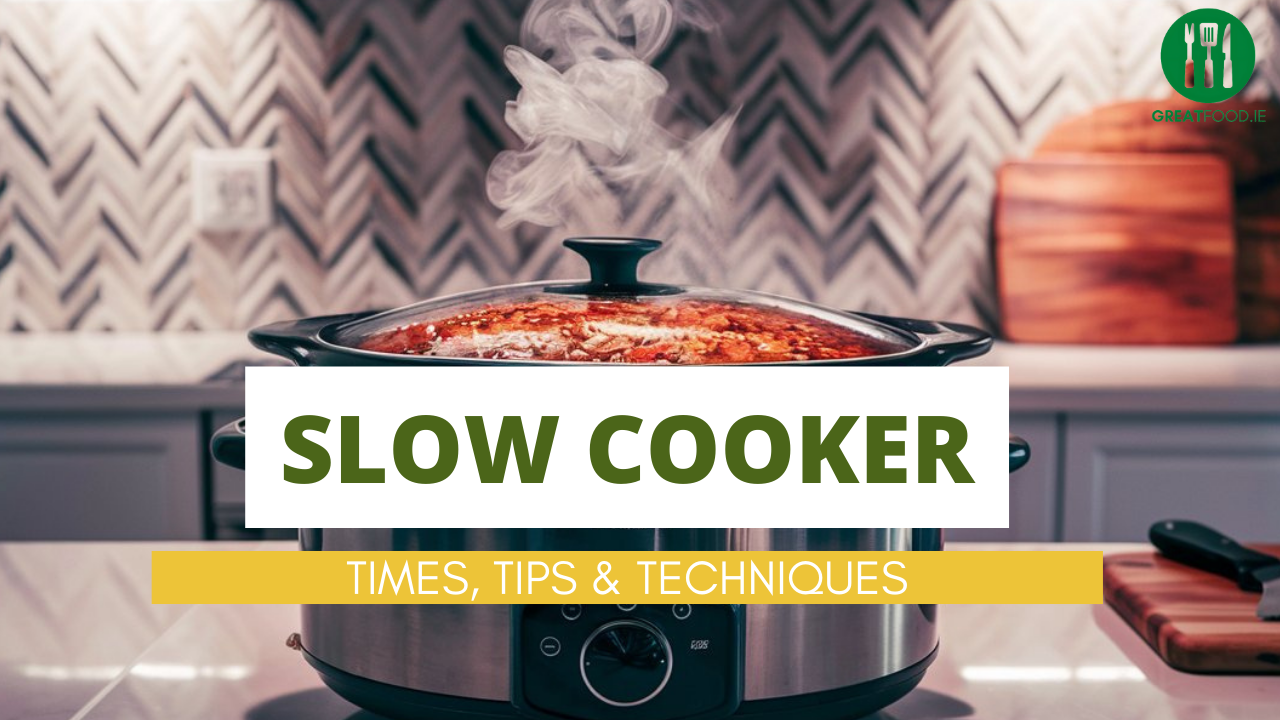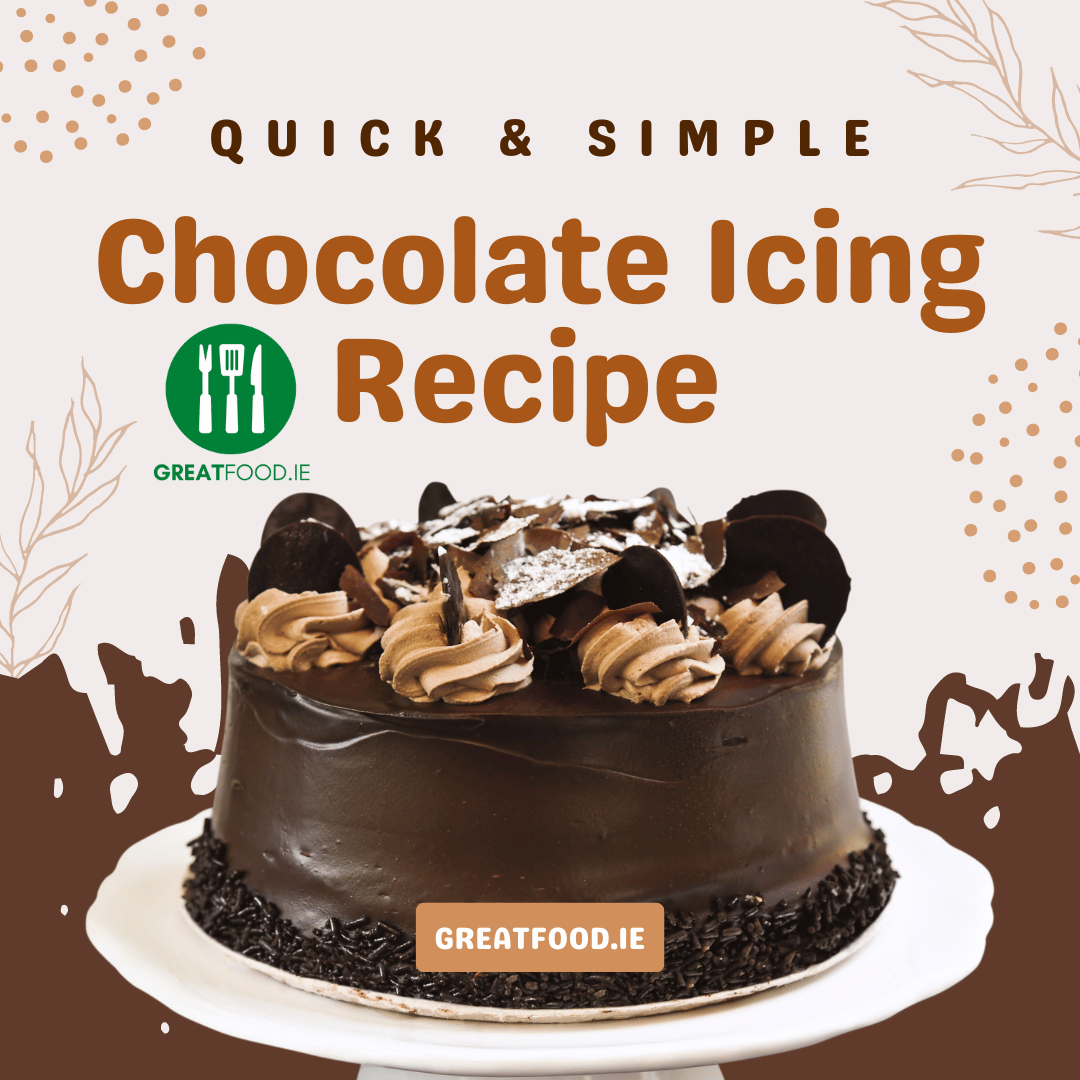Slow cookers are a convenient and safe way to prepare delicious meals with minimal effort. By understanding the proper cooking times, temperatures, and techniques, you can create tender, flavorful dishes that are ready to enjoy when you need them.
What is a Slow Cooker?
A slow cooker, also known as a crock-pot, is a countertop electrical appliance designed to cook food slowly over a long period. It typically consists of three main components: a ceramic or porcelain pot (often called a “crock”), an electric heating element that surrounds the pot, and a glass lid that fits snugly on top to trap heat and moisture.
The ceramic pot is removable, making it easier to clean and allowing you to serve food directly from it. The heating element provides a consistent, low temperature that cooks food gently, while the lid helps to retain moisture and prevent evaporation.
Slow cookers work by heating the contents to a temperature between 77°C and 138°C, which is hot enough to kill bacteria but low enough to allow for slow, even cooking. This low-and-slow method is particularly well-suited for tenderizing tough cuts of meat, cooking dried beans, and developing rich flavors in soups, stews, and other dishes.
Modern slow cookers often feature programmable digital controls that allow you to set specific cooking times and temperatures, as well as automatic shut-off or “keep warm” functions for added convenience and safety. However, manual dial controls are still common and offer a simple, cost-effective option for those who don’t require advanced features.
Slow Cooker Types & Sizes
Slow cookers come in various types and sizes to suit different cooking needs and preferences:
- Manual slow cookers: These basic models have simple dial controls for low, high, and warm settings. They are affordable and straightforward to use but require more monitoring and manual timing.
- Programmable slow cookers: These advanced models feature digital controls that allow you to set specific cooking times and temperatures. They often include automatic shut-off or “keep warm” functions for added convenience and safety.
- 1 to 2-quart slow cookers: Suitable for cooking small servings, sauces, and dips.
- 3 to 4-quart slow cookers: Ideal for preparing meals for 2-3 people.
- 5 to 7-quart slow cookers: The most common and popular size range, offering flexibility for most households. These can accommodate large roasts or whole chickens.
- 8 to 10-quart slow cookers: Perfect for serving larger groups or cooking turkeys.
Low vs High Settings
When using a slow cooker, it’s important to understand the differences between the low and high settings and how they affect cooking times.
| Low Setting | High Setting |
| Takes 7-8 hours to reach the simmer point (98°C) | Takes 3-4 hours to reach the simmer point (98°C) |
| Suitable for recipes that require longer cooking times, such as tough cuts of meat or dried beans | Suitable for recipes that require shorter cooking times or when you need to cook a dish more quickly |
| Allows for more even cooking and better flavor development | May result in slightly less tender meat or less developed flavors compared to the low setting |
When deciding which setting to use, consider the following:
- If you have enough time, use the low setting for more even cooking and better flavor development. This is particularly important for tough cuts of meat like chuck roast that need time to break down connective tissue and become tender.
- Use the high setting when you need to cook a dish more quickly or have less time available. Keep in mind that some recipes may require adjustments to ingredient quantities or liquid levels when using the high setting.
- Delicate ingredients like fish or vegetables may overcook on the high setting, so it’s best to add them later in the cooking process or use the low setting.
- When in doubt, use the setting that best fits your timeline. Most dishes can be cooked on either low or high, as long as you adjust the cooking time accordingly.
Slow Cooker Conversion Guidelines
When converting traditional oven or stovetop recipes to a slow cooker, it’s helpful to have a general idea of how cooking times will differ. Use this conversion chart as a starting point:
| Oven/Stovetop Time | Slow Cooker (Low Setting) | Slow Cooker (High Setting) |
| 15-30 minutes | 4-6 hours | 1.5-2.5 hours |
| 35-45 minutes | 6-8 hours | 3-4 hours |
| 50 minutes – 3 hours | 8-12 hours | 4-6 hours |
Several factors can affect cooking times in a slow cooker, so it’s essential to consider these when adapting recipes:
- Ingredient size and quantity: Larger cuts of meat or greater quantities of ingredients will require longer cooking times. Cut ingredients into uniform pieces to ensure even cooking.
- Liquid levels: Slow cookers require less liquid than traditional cooking methods due to minimal evaporation. Reduce the amount of liquid in the original recipe by about a third to a half.
- Recipe complexity: Recipes with multiple steps or that require pre-cooking (e.g., browning meat) may need adjustments to ensure all ingredients are cooked properly and flavors develop well.
- Slow cooker size: The size of your slow cooker can impact cooking times. A smaller slow cooker will cook faster than a larger one, so adjust times accordingly.
- Altitude: High altitudes can affect cooking times and temperatures. You may need to increase cooking times by about 30 minutes for every 5,000 feet above 2,000 feet elevation.
To ensure the best results when converting recipes, keep these tips in mind:
- Check the dish’s doneness at the lower end of the suggested cooking time range to avoid overcooking.
- Adjust the order in which you add ingredients based on their cooking times. For example, add vegetables later in the cooking process to prevent them from becoming mushy.
- Use a food thermometer to ensure that meats reach a safe internal temperature (e.g., 74°C for poultry, 63°C for beef and pork).
- Keep the lid on the slow cooker as much as possible to maintain a consistent cooking temperature.
By understanding these general guidelines and factors affecting cooking times, you can successfully adapt your favorite recipes for the slow cooker and create delicious, perfectly cooked meals.
Slow Cooker Temperature Settings
Slow cookers offer various temperature settings to accommodate different recipes and cooking needs. Understanding the temperature ranges for each setting is crucial for achieving the best results and ensuring food safety. Here’s a breakdown of the common slow cooker temperature settings and their uses:
| Setting | Temperature Range | Uses |
| Low | 76-93°C | Ideal for longer cooking times (8+ hours) and for dishes that benefit from slow, gentle cooking, such as tough cuts of meat, soups, and stews. |
| High | 100-149°C | Suitable for shorter cooking times (4-6 hours) and for dishes that require a higher temperature, such as poultry, tender cuts of meat, and some desserts. |
| Warm | 63-76°C | Used to keep cooked food at a safe serving temperature without overcooking. Perfect for potlucks, buffets, or when dinner is delayed. |
When choosing a temperature setting, consider the recipe’s requirements, the ingredients being used, and the desired cooking time. Always ensure that food reaches a safe internal temperature before serving (74°C for poultry, 63°C for beef and pork).
Temperature’s Impact on Flavor
Temperature plays a crucial role in the texture and flavor development of foods cooked in a slow cooker. Higher temperatures can lead to faster cooking times but may result in less tender meats or less developed flavors compared to using the low setting. Cooking at lower temperatures for longer periods allows for more even cooking and better flavor development, particularly for tough cuts of meat that require time to break down connective tissue.
Maintaining a safe cooking temperature is essential to prevent foodborne illnesses. Slow cookers should be set to a minimum temperature of 165°F (74°C) to ensure that food remains above the “danger zone” of 4-60°C, where harmful bacteria can multiply rapidly. Using a food thermometer to check the internal temperature of meats is recommended to guarantee they have reached a safe temperature before serving.
To maintain a consistent and safe cooking temperature, keep the slow cooker lid on as much as possible during cooking. Each time the lid is removed, the temperature can drop by 12-10°C, extending the cooking time by 20-30 minutes. Only remove the lid when necessary for stirring or checking doneness.
By understanding how temperature impacts texture, flavor, and safety, you can optimize your slow cooking techniques to create delicious, perfectly cooked meals while minimizing the risk of foodborne illnesses.
Layering for Optimal Results
To ensure even cooking and the best texture for your slow-cooked meals, it’s important to layer ingredients properly in the pot. Place denser, longer-cooking ingredients like root vegetables and tougher cuts of meat on the bottom, where they will be closest to the heat source. More delicate ingredients, such as quick-cooking vegetables or seafood, should be added later in the cooking process or placed on top of the other ingredients to prevent overcooking.
When layering ingredients, avoid overcrowding the slow cooker. Filling the pot too full can lead to uneven cooking and may cause the contents to overflow during cooking. Aim to fill the slow cooker no more than two-thirds to three-quarters full, leaving enough space for the ingredients to expand and for steam to circulate.
Additionally, cut ingredients into uniform pieces to ensure they cook at the same rate. This is particularly important for meats, as smaller pieces will cook faster than larger ones. If using tender vegetables like peas, spinach, or zucchini, add them in the last 30-60 minutes of cooking to prevent them from becoming mushy.
Prepping for Flavor & Texture
Prepping ingredients before adding them to the slow cooker can significantly enhance the flavor and texture of your finished dish. Pre-browning meat and sautéing vegetables are two important techniques to consider.
- Browning meat: Pat it dry with a paper towel, then sear it in a hot skillet with a little oil until a brown crust forms on all sides. This step also helps to render excess fat and seal in moisture, resulting in more tender, flavorful meat.
- Sautéing vegetables: Heat a small amount of oil in a skillet and cook the vegetables until they begin to soften and caramelize slightly. This step can also help to reduce the overall cooking time, as the vegetables will be partially cooked before entering the slow cooker.
When it comes to using fresh versus frozen ingredients, both can work well in a slow cooker, but there are a few considerations to keep in mind. Fresh ingredients, particularly vegetables, may provide better texture and flavor, as they haven’t undergone the freezing process, which can affect their structure and taste. However, frozen ingredients can be a convenient option when fresh is not available or if you’re looking to save time on prep work. If using frozen ingredients, it’s best to thaw them before adding them to the slow cooker to ensure even cooking and to avoid extending the cooking time.
Liquid Levels & Flavor
When using liquids in a slow cooker, it’s important to strike a balance between adding enough to create steam and prevent ingredients from drying out, while not overfilling the pot. As a general rule, the liquid should partially cover the ingredients but not submerge them completely. This is because slow cookers generate less evaporation compared to traditional stovetop cooking, so less liquid is needed.
The type of liquid used can significantly impact the flavor of the finished dish. Here are some common liquids and their effects:
- Broth or stock: Adds depth and complexity to the dish.
- Wine: Adds acidity, sweetness, and subtle flavor notes. Choose a wine you would drink, as the flavor will concentrate during cooking.
- Water: Can be used when you want the ingredients’ natural flavors to shine. It’s also a good choice when you need to control the sodium content of your dish.
- Tomato juice or puree: Adds a rich, savory flavor to dishes like chili or ragu.
- Coconut milk: Imparts a sweet, tropical flavor and works well in curries, soups, and stews.
Consider the moisture content of your ingredients. Vegetables like onions, mushrooms, and zucchini release a lot of liquid as they cook, so you may need to adjust the added liquid accordingly. Conversely, ingredients like rice, grains, and pasta absorb liquid, so you may need to add more to prevent them from drying out.
By using liquids wisely and selecting the right type for your recipe, you can create flavorful, perfectly cooked meals in your slow cooker while avoiding common pitfalls like dryness or diluted flavors.
Boosting Flavor & Texture
Here are some tips and tricks for enhancing flavor when using herbs, spices, and other ingredients in your slow cooker meals:
- Timing: Add fresh herbs like parsley, basil, and cilantro in the last 5-10 minutes of cooking for the most vibrant flavor. Dried herbs and spices can be added earlier, as they need more time to release their flavors.
- Toasting spices: Toast dried spices in a dry skillet over medium heat for 1-2 minutes before adding them to your slow cooker. This helps to release their essential oils and enhance their aroma and flavor.
- Bouquet garni: Tie sturdy herbs like thyme, rosemary, and bay leaves together with kitchen twine and add to your slow cooker at the beginning of cooking. Remove before serving for a subtle background flavor.
- Dairy ingredients: Stir dairy ingredients like milk, cheese, and sour cream in during the last 30-60 minutes of cooking for the best texture and flavor.
- Delicate ingredients: Add delicate ingredients like soft vegetables, seafood, and pasta in the final hour of cooking, or cook separately and stir in just before serving.
- Brightening flavors: Stir in fresh citrus juice or zest, vinegar, or tender herbs at the end of cooking to brighten up flavors and balance richness.
By incorporating these tips and tricks, you can build layers of flavor in your slow cooker meals while ensuring ingredients maintain their optimal taste and texture. Experiment with different herb and spice combinations to find your perfect flavor profile.
Avoid Overcooking Mishaps
To prevent overcooking in a slow cooker, it’s important to adjust cooking times based on the ingredients you’re using and to check for doneness periodically. Delicate ingredients like fish, seafood, and tender vegetables should be added later in the cooking process to avoid becoming mushy or disintegrating.
Using a timer is a helpful way to keep track of cooking times and ensure you don’t accidentally overcook your meal. Set the timer for the shortest recommended cooking time for your recipe, and check the dish’s doneness at that point using a fork, skewer, or food thermometer. If the ingredients are not yet tender or haven’t reached a safe internal temperature, continue cooking and check again after another 30-60 minutes, depending on the recipe.
When checking for doneness, look for these signs:
- Meat should be fork-tender and easily pull apart or shred.
- Poultry should reach an internal temperature of 74°C.
- Beef and pork should have an internal temperature of at least 63°C.
- Vegetables should be tender but not mushy.
Keep in mind that each time you remove the slow cooker lid to check doneness, the temperature can drop by 12-10°C, extending the cooking time by 20-30 minutes. To minimize heat loss, only check when necessary and avoid frequent stirring, which can also affect cooking times and textures.
By adjusting cooking times for different ingredients, using a timer, and checking for doneness periodically, you can prevent overcooking and ensure your slow cooker meals turn out perfectly every time. With practice and attention to detail, you’ll master the art of slow cooking and create delicious, tender dishes with ease.
Slow Cooker Care Essentials
Proper cleaning and maintenance are essential for keeping your slow cooker in top condition and ensuring its longevity. Here are some key tips for cleaning and maintaining your slow cooker:
- Clean removable parts after each use: Wash the ceramic pot, lid, and any removable handles or knobs in warm, soapy water. Rinse thoroughly and dry before reassembling.
- Avoid abrasive cleaners: These can damage the surface of the ceramic pot or scratch the glass lid. Use a soft sponge, cloth, or rubber spatula to remove stubborn food residue.
- Tough stains or odors: Create a paste using baking soda and water, apply it to the affected areas, and let it sit for a few minutes before wiping clean.
- Heating base: Never immerse the heating base in water or other liquids, as this can damage the electrical components. Instead, wipe the exterior with a damp cloth and dry thoroughly.
- Deep clean every few months: Fill the slow cooker with water and add 1/2 cup of white vinegar (for a 3-quart model) or 1 cup (for a 6-quart model). Cover and cook on low for 1 hour, then remove the lid and let it cool before washing in warm, soapy water.
- Storage: Store your slow cooker in a clean, dry place with the lid slightly ajar to allow air circulation and prevent odors or mold growth.
- Inspect power cord and plug: Regularly check for any signs of damage or fraying. If you notice any issues, discontinue use and contact the manufacturer for repair or replacement.
By following these cleaning and maintenance tips, you can keep your slow cooker in excellent condition, ensuring it remains a reliable and efficient kitchen appliance for years to come.
Fixing Slow Cooker Snags
Slow cooking can sometimes lead to common issues like undercooked or overcooked food, excessive liquid or dryness, and uneven cooking. Here are some tips for troubleshooting these problems:
- Undercooked food: If your food is not cooked through by the end of the recommended cooking time, continue cooking in 30-minute increments until it reaches the desired doneness. Make sure the slow cooker is functioning properly and maintaining the correct temperature.
- Overcooked food: To prevent overcooking, use the shortest recommended cooking time for your recipe and check doneness periodically. Cut ingredients into uniform sizes to ensure even cooking, and add delicate ingredients like vegetables or seafood later in the cooking process.
- Excessive liquid: If your dish has too much liquid at the end of cooking, remove the lid and continue cooking on high for 30-60 minutes to allow excess liquid to evaporate. Alternatively, you can thicken the liquid by stirring in a slurry of cornstarch and water or pureeing some of the cooked vegetables.
- Dryness: If your food seems dry or tough, it may be due to insufficient liquid or overcooking. Make sure you’re adding enough liquid to partially cover the ingredients, and avoid lifting the lid frequently during cooking, as this can cause heat and moisture loss.
- Uneven cooking: To promote even cooking, layer ingredients properly with denser items on the bottom and delicate items on top. Cut ingredients into uniform sizes and avoid overcrowding the pot. If using frozen ingredients, thaw them before adding to the slow cooker to ensure even cooking.
By understanding these common issues and implementing the appropriate troubleshooting techniques, you can overcome challenges and achieve perfectly cooked, flavorful meals in your slow cooker.
Resolving Slow Cooker Problems
Here are some solutions for fixing common slow cooker issues and achieving better results:
- Adjust cooking times and temperatures: If your dish is consistently overcooked or undercooked, try adjusting the cooking time or switching to a different temperature setting. For example, if your food is often overcooked on the high setting, try using the low setting for a longer duration.
- Modify recipes: If a recipe isn’t yielding the desired results, don’t be afraid to make modifications. Reduce the amount of liquid for dishes that turn out too watery, or add more liquid if your food is dry. Adjust seasoning levels to suit your taste preferences, and experiment with different herb and spice combinations.
- Fix issues mid-cooking: If you notice a problem during the cooking process, there are often ways to salvage the dish. If the food seems dry, try adding a splash of broth or water. If there’s too much liquid, remove the lid and continue cooking on high to allow excess moisture to evaporate. If the flavors seem dull, brighten them up with a squeeze of citrus juice or a dash of vinegar.
- Use a thermometer: To ensure your food reaches a safe internal temperature without overcooking, use a meat thermometer to check doneness. This is especially important for large cuts of meat or poultry.
- Adapt to your slow cooker: Keep in mind that every slow cooker is different, so recipes may need to be adapted based on your specific model. Take notes on what works well and what doesn’t, and adjust accordingly for future meals.
By making these adjustments and modifications, you can overcome common slow cooker challenges and create delicious, perfectly cooked meals tailored to your preferences.
Slow Cooking Success Awaits
In conclusion, mastering the art of slow cooking can lead to delicious, tender, and flavorful meals with minimal effort. By understanding the proper cooking times, temperatures, and techniques for your slow cooker, you can create a wide variety of dishes that are sure to impress.
Remember to choose the right cuts of meat, layer ingredients properly, and use liquids wisely to ensure even cooking and optimal flavor development. Don’t be afraid to experiment with different herbs, spices, and ingredient combinations to find your perfect flavor profile. With practice and attention to detail, you’ll be able to troubleshoot common issues and adapt recipes to suit your preferences.
Slow cooking is a versatile and rewarding method that allows you to create hearty, comforting meals with ease. We encourage you to explore the many possibilities of your slow cooker and share your experiences, tips, and favorite recipes with others. By exchanging ideas and inspiration, we can all continue to expand our culinary horizons and enjoy the benefits of this convenient and satisfying cooking technique.
References & Further Reading
Here are some helpful additional resources with links to the references used throughout this slow cooker guide:
- The Smart Slow Cooker – Resources: Explore a comprehensive collection of slow cooker tips, techniques, product reviews, and recipes.
- University of Maine Cooperative Extension – Slow Cooker: 8 Steps for Success & Safety: For a detailed guide on using a slow cooker safely and effectively.
- Running to the Kitchen – Slow Cookers 101: A Guide to Simple Cooking: An overview of slow cooker benefits, features to look for when purchasing, and delicious beginner recipes.
- Food Network – Best Tips for Slow-Cooker Meals: Expert advice on creating rich, satisfying slow-cooked dishes.
- Today Food – 11 slow cooker tips and tricks every home cook needs to know: Useful tips for mastering your slow cooker, from preheating to ingredient prep.
By exploring these additional resources, you can continue to expand your slow cooking knowledge and find new inspiration for creating delicious, easy meals in your slow cooker. Don’t hesitate to experiment, adapt recipes to your liking, and share your experiences with fellow slow cooking enthusiasts. Happy cooking!
See also:












